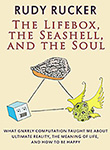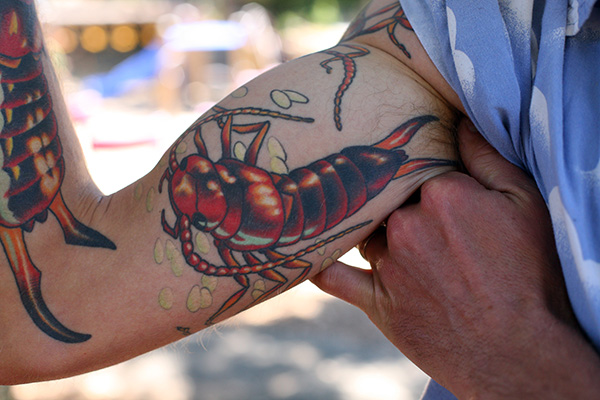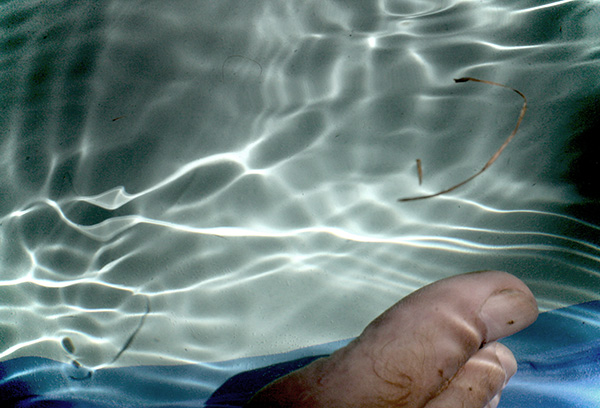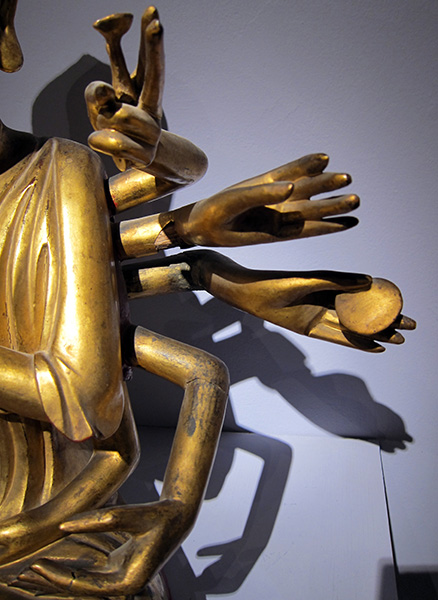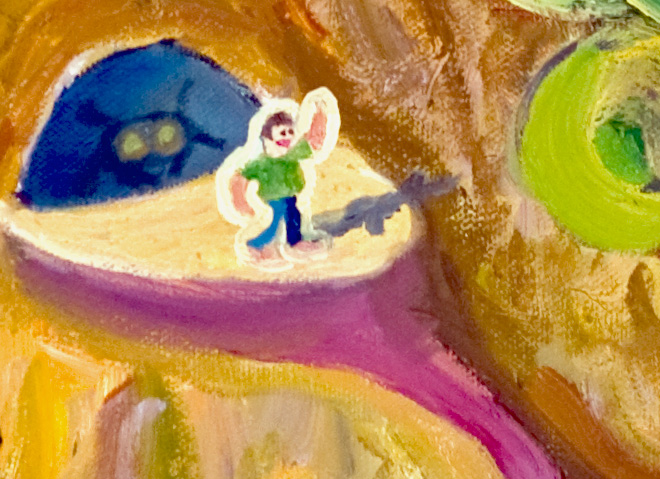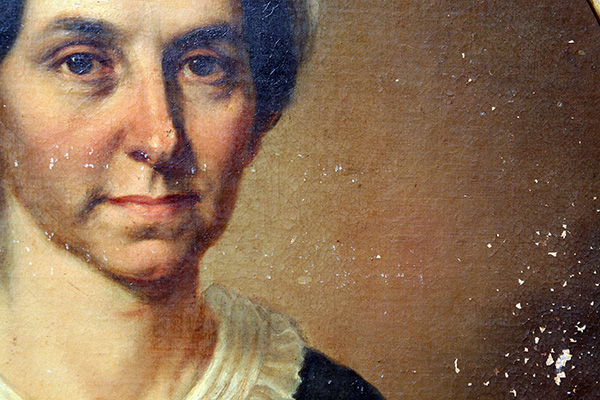Just back from hike-in camping with my wife, Sylvia, at the Point Reyes National Seashore Coast Camp. It’s a two mile hike in, not too bad, and you end up in a site right by the Limantour Beach. I never manage reserve campsites in advance—it’s just too big a hassle and too much thinking ahead—but if you show up at the Bear Valley Visitor center shortly after 9 a.m. on a weekday, you can normally get a site. Not that managing this is easy, but every couple of years I can.

When I visit these wild, deserted beaches, I sometimes think of the publicity photo of Raquel Welch for the 1966 film, One Million Years B.C.

It was foggy in the morning, but got sunny around noon on one day and 2 p.m. on the other.

I’m always so impressed with how intricately and beautifully nature arranges things when humans more or less leave her alone. The little rectangles of park and yard that we have in cities aren’t really the same kind of thing.

[On “Sculptured Beach” a mile south of the Coast Camp.]
I’m still thinking about this Alan Turing story I want to write, possibly with an eye to getting up enough momentum to charge ahead with a novel that has the title Turing & Burroughs.

[Protosentient pre-fetal green goo.]
I’ve been reading this very long Turing biography from 1983, Andrew Hodges, Alan Turing: The Enigma. The book really rounds out Turing’s character, and I’m internalizing some of this stuff. There’s always a danger, when writing about historical figures, to settle for a cartoon version of them.

[In the hamlet of Pt. Reyes Station. The Bovine Bakery is a must.]
I feel like in some ways I was like Turing myself as a boy and young man. Like Turing, I always had huge problems with my writing pen, often got ink on myself, and tended to get low grades simply because my papers were so messy. And, like Alan, when filling out official forms, I’d pondered every answer, thiking about the optimal strategy. It was always clear that the authorities were my enemies.
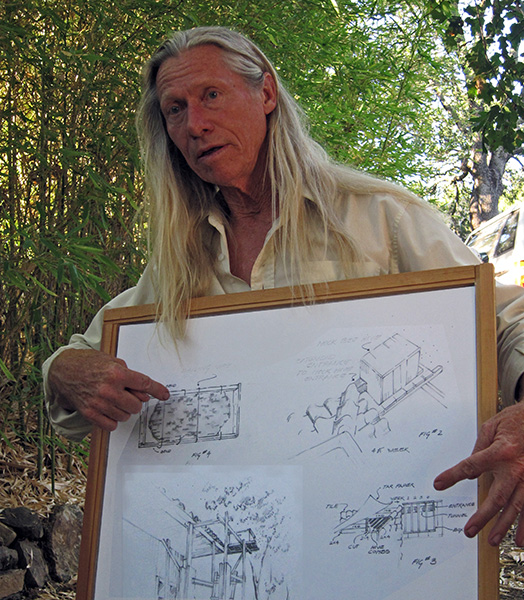
[My friend Bill explains his method of luring a swarm of bees from their lair by building a fake hive outside their entrance.]
Turing had an odd way of speaking. His voice was somewhat high-pitched, he had a grating laugh, and he emphasized words by raising his pitch still higher on them. Hodges has a quote from an American scientist who remembers Alan telling him a dream as follows: “I had a dream last night. I dreamt I was walking up your Broadway carrying a flag, a Confederate flag. One of your bobbies came up to me and said, ”˜See here! You can’t do that,’ and I said, ”˜Why not? I fought in the War between the States.’”

Turing did a lot after his 1936 paper, “On Computable Numbers, with an Application to the Entscheidungsproblem” written when he was 24, and the source of his seminal formulation of an abstract computer as a “Turing machine.”
In World War II, he was in the thick of the British efforts to break the German army’s Enigma and Fish codes. He was said to be the top cryptanalyst in the United Kingdom, and Turing’s group made a key difference in the war’s outcome.
As the war died down, Turing got hold of “a twenty-five cent handbook on electronics, the RCA Radio Tube Manual, and invented a new way of enciphering speech.” The cipher was called Delilah, basically you needed a box of electronics at the sender’s phone and matchinb box at the receiver’s phone. The cipher worked by overlaying random noise on phone message. A cool, modernistic and Wolframesque feature of this is that Turing used a deterministic but chaotic circuit in order to generate the “noise.” The sender’s and receiver’s boxes could be set to generate exactly the same pseudorandom patterns.

Listening to a Delilah message was maybe like listening to Turing himself. It was overlaid by a noisy background buzz and a 4000 Hz whistle. Talk to me, Alan.






